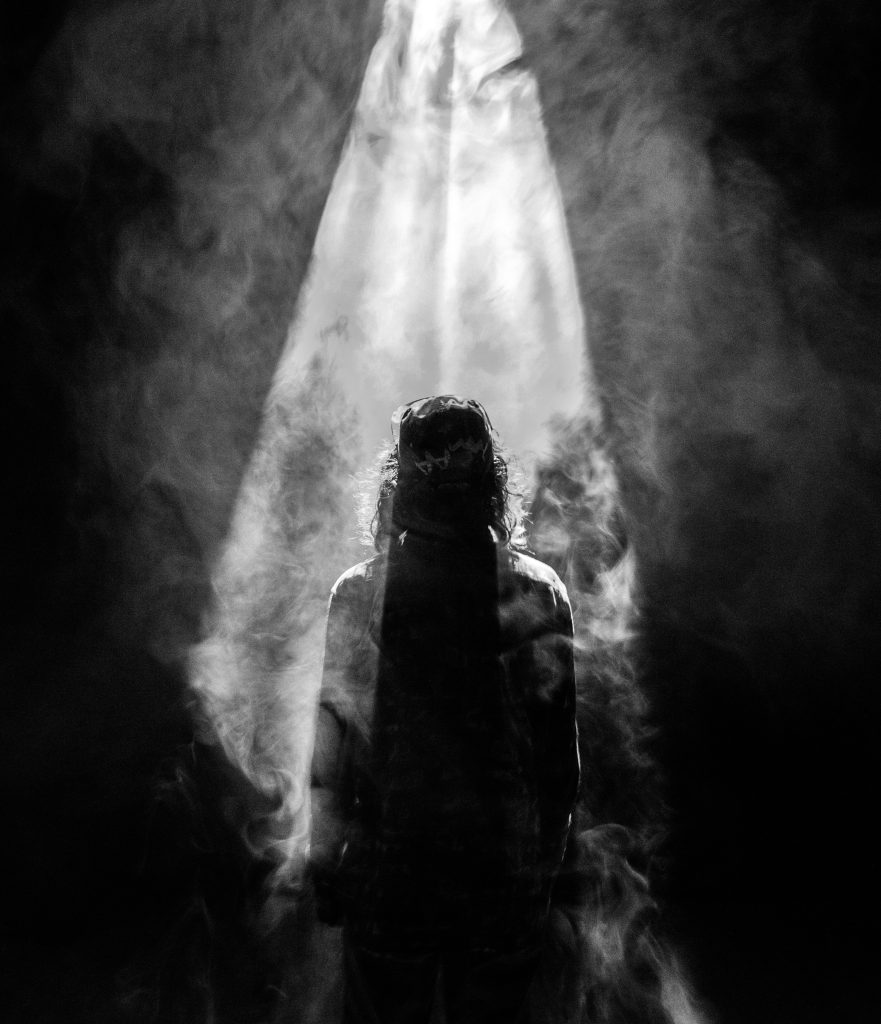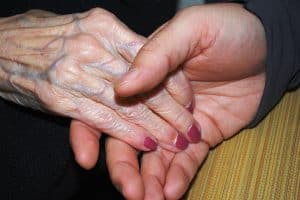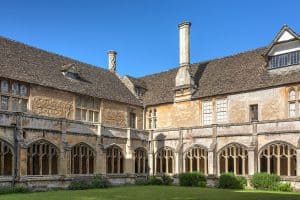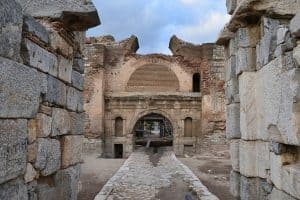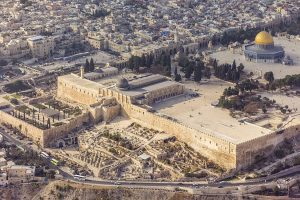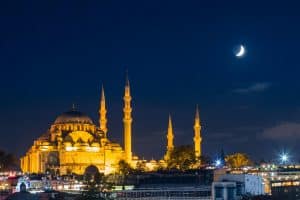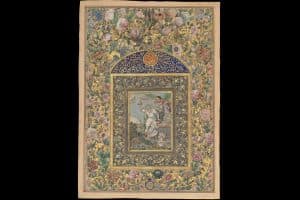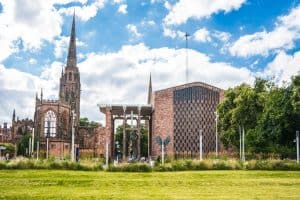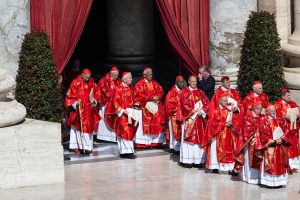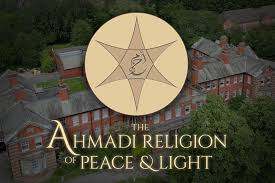By Anna Kira Hippert and Sarah Harvey
New Religious Movements is an academic term that encompasses many groups and organisations that are often negatively labelled as sects or cults in popular discourse. The movements vary enormously, although they are often derived from most established faiths, and there is significant disagreement among researchers about how to categorise them
History
While new religions are documented throughout history, the term New Religious Movement (NRM) has its origins in the “cult wars” or ‘cult scare’ in western countries during the 1970s and 1980s. A plethora of NRMs emerged in these countries from the 1950s through both migration and through changing social dynamics, including greater opportunities for young people to explore spiritual journeys and become “seekers”.
NRMs really came to the forefront of public consciousness in the 1970s, with the murder-suicides of more than 900 members of the Peoples Temple living in the Jonestown community in the jungle of Guyana in 1978. Jonestown’s leader, Jim Jones, became the stereotypical charismatic “cult leader”, ordering his followers to consume a fruit drink laced with cyanide, and sacrifice their lives, rather than relinquish the values of the community. Jones, 47, died with his followers.
The popular fear of new religions being involved in violence continues because of occasional high-profile tragedies, such as the Japanese group Aum Shinrikyo’s 1995 attack on the Tokyo subway, which left 13 dead and hundreds injured by the sarin nerve agent. NRMs are also sometimes associated in the public imagination with group suicide, such as the Heaven’s Gate incident in 1997 in which 39 members of a UFO-based movement died, or being attacked by government agents with tragic results, such as the Branch Davidians in Waco, Texas, in 1993. However, the vast majority of new religions exist without violent episodes that make headlines.
In the period after the Second World War, tensions often arose between young adult converts to NRMs and their families and friends. Relatives sometimes elicited the help of various “anti-cult” organisations to try to “rescue” the converts through various means — from encouragement and interventions through to kidnap and forcible “deprogramming”. These actions were often based on the premise that the convert was a “victim” who had been “brainwashed” into joining the movement.
While deprogramming is now illegal in both the United States and UK it still takes place in some east Asian countries and the stereotype of the brainwashed cult member remains popular. It was in response to this context that some scholars of religion, including Eileen Barker and Gordon Melton, began using the term New Religious Movement to provide a more academic and objective starting point for analysing these movements.
What exactly is a New Religious Movement?
While different scholars have different definitions of a new religious movement, the term is generally used to cover a variety of newer, alternative religious and spiritual movements that may be of new origin or a breakaway from an established religion. Some NRMs may have split from an established religion, such as the Neo-Charismatic Movement or the Jesus People, both of which were established in response to criticisms of “mainstream” Christianity. Sometimes, NRMs emerge from combining beliefs and practices found within a counterculture, as a critique of current social structures, capitalism or society itself.
Although the term NRM has provided a more neutral approach in academic discourse, there has been much disagreement over what kind of groups should and should not be covered by the term. One such debate is how to define what timespan “new” refers to. Some argue “new” primarily means that the NRM should be younger than the majority of the established religions (such as Christianity, Judaism, Islam, Hinduism and Buddhism), although without specifying an exact time period. However, others such as the sociologist Roy Wallis argue NRMs only began to emerge in the 1950s and places the end of the Second World War as the criterion for a new religious movement.
Gordon Melton, an historian and theologian, takes a different approach. He argues “new” religions usually develop in tension with society and he therefore understands “new” to mean the tense interaction between the emerging religion and wider culture. “New”, for Melton, refers more to the deviation from social norms and less to their year of origin. Some groups which are relatively old still retain the tensions noted by Melton and are sometimes considered “cults” in popular discourse. For instance, the sociologist of religion Bryan Wilson names the Church of Jesus Christ of Latter-day Saints (Mormons), the Seventh-day Adventists and the Salvation Army as the first NRMs, thus expanding the time span all the way back to the 1830s.
Eileen Barker prefers a sociological framing of a “new” religion; she argues that NRMs involve a charismatic leader and a membership base of converts (the first-generation membership). These social characteristics create the potential for beliefs and practices that diverge significantly from social norms and for more volatile responses in the face of opposition. Barker has argued that as the second and third generations are born into an NRM, the movement needs to interact with the surrounding society to a greater extent and can go through a process of “denominationalisation”, becoming less alternative and converging more with “mainstream” society and/or religious movements.
More recently some scholars have highlighted the importance of new information technology, noting that new religious movements were often early adopters of new media. Therefore, some have argued that only religious movements which were established as “internet natives” are at this point truly “new” as a social phenomena. The internet has made it much easier to disseminate teachings worldwide, so that new religious teachings, practices, and philosophies can circulate quickly.
Diversity and scale
In 1988, Eileen Barker founded Inform (www.inform.ac), an educational charity that provides information about NRMs or — as Inform know calls them — “minority religions”. Inform exists to counter the harm that can be caused by misinformation or a lack of knowledge about minority religions, by making academic research accessible to the general public.
Inform maintains a database which is inclusive — any movement or group that broadly considers questions relating to meaning and purpose to life can be included. Although this database is necessarily always incomplete and provisional, it is perhaps the largest source of information on contemporary minority religions in the UK, with more than 5,000 files on different movements. Because of the diversity of social characteristics, beliefs and practices involved in very distinct new and minority religions, it is important to get up-to-date and accurate information on any specific group of interest.
Some examples of the groups most frequently inquired about to Inform are listed below.
Church of Jesus Christ of Latter-day Saints
The Church of Jesus Christ of Latter-day Saints (LDS) is popularly known as the Mormons, despite a church dictate in 2018 that the term Mormon must no longer be used. The term comes from the Book of Mormon, which is believed to be a new revelation from God, revealed to Joseph Smith by the angel Moroni, son of the prophet Mormon, in the 1820s.
Smith founded the church in 1830 and it has had its headquarters in Salt Lake City, Utah, since the late 1840s. The church teaches that Zion, or the New Jerusalem, will be built on the American continent and that Jesus will reign there when he returns to earth. No date has been set for this, but it is expected imminently and members believe that they are living in the “latter days”.
Distinctive beliefs of the church include that souls move through three realms of existence: a pre-mortal existence with God, a temporary time on earth, and then eternal life, or salvation in the Celestial Kingdom. Families can remain together in the spirit world if their relationships are sealed in an LDS temple. Some early members, including Joseph Smith, practised polygamy but this was banned by the fourth president in 1890. Polygamy is still practiced by some breakaway groups, sometimes called fundamentalist Mormons.
Read the RMC’s fact sheet on the Latter-day Saints Church here
The Church of Scientology
The Church of Scientology comprises a number of organisations promoting the teachings and practices of L. Ron Hubbard (1911-86). “Scientology” is defined as “knowing about knowing”, from the Latin word scio and the Greek word logos.
Scientologists believe that humans have become enmeshed in the material universe and have lost sight of their true spiritual nature. They teach techniques they claim can help people become aware of their spiritual nature, enhance their quality of life and the lives of others as well as increasing happiness. At the core of Scientology is the belief that everyone has a mind that reacts to life’s traumas, clouding the analytical mind and keeping people from experiencing reality.
Members of the Church of Scientology undergo a process called auditing to find the sources of this trauma by reliving these experiences in an attempt to neutralise them and restore the primacy of the analytical mind by working toward a spiritual state called “clear”. Auditing and training together comprise two separate but related sides of Scientology’s path to spiritual enlightenment called the Bridge to Total Freedom. Scientologists are also involved in campaigns to reform mental healthcare (taking an anti-psychiatry position), eradicate addictions and combat abuses of human rights.
The Family International (previously the Children of God)
The Family International today exists as an international and largely online network of about 1,600 members, but it was one of the larger and more controversial movements of the 1960s and 1970s. It was founded in the late 1960s in California by David Brandt Berg (1919-94).
An evangelical Christian organisation, emerging out of the “hippie scene”, it had a focus on missionary activity and reaching out to others for Christ, largely through street witnessing and promoting its own music and literature. The movement was based on two key beliefs: a belief in the imminence of the Endtimes and a belief that the “Law of Love” superseded all other Christian teachings.
In his interpretation of this law, Berg developed some controversial teachings around sexuality, including sexual experimentation and “sharing” among members of the movement. In the early 1970s, some members practised “flirty fishing” (or FFing), in which sex was used as a form of witnessing — reaching out to the “fish” through sex. The culture of permissive sexuality meant that in some Family communities, minors were included in sexual practices. While this had become an excommunicable offence within the movement by 1989, some of the second generation raised within the movement experienced sexual and other forms of abuse.
ICOC or ICC (sometimes called Sold Out Discipling Movement)
The International Churches of Christ (ICOC) are a family of Christian churches that grew out of the campus outreach “Crossroads movement” of a US Protestant denomination, the Churches of Christ. Kip McKean was active in this movement when, in 1979, he gathered together a group of 30 fellow Christians who decided to commit their lives totally to Christ in a church distinct from what they perceived as the “lukewarm” Churches of Christ.
The church led by McKean later became known as the Boston Church of Christ and, as it spread, the Boston Movement, until it took the name International Churches of Christ in 1992 (and local congregations would take on the name of the city in which they resided, eg the London Church of Christ). The aim of ICOC was to restore first-century Christianity.
A key feature of the ICOC has been the “discipling system” whereby each member was assigned a discipler who was “older in Christ”. The discipler was responsible for the member’s spiritual progression by discussing details of everyday life, both sacred and secular, and offering advice. It is this, combined with its activities on university campuses, and its heavy focus on recruitment, which made the ICOC one of the more controversial new Christian groups in the UK.
Iskcon (International Society for Krishna Consciousness)
The International Society for Krishna Consciousness (Iskcon), popularly known as the Hare Krishna movement, has been one of the more visible minority religions in the West. Founded by A. C. Bhaktivedanta Swami Prabhupada in New York in 1966, the origins of Iskcon can be placed within the medieval Indian Bhakti movement.
Members prefer to be understood as part of their historical Indian tradition rather than as “new”. However, their willingness to accept western converts was new in the 1970s and initially caused social anxiety. Followers, often dressed in saffron robes, can often be seen on the streets near their temples dancing, chanting and making music in devotion to God (Bhakti) in the form of Krishna.
The central practice is chanting the Mahamantra: Hare Krishna Hare Krishna, Krishna Krishna Hare Hare, Hare Rama Hare Rama, Rama Rama Hare Hare. Formal initiates spend about two hours each day chanting 16 rounds of the mantra on a string of 108 beads (1,728 repetitions), a process known as japa. Through chanting, devotees believe that they will bring a constant consciousness of God into all aspects of their lives.
Iskcon was partly popularised in the UK by George Harrison of the Beatles who donated the manor house, Bhaktivedanta Manor, in Watford, which remains the group’s British headquarters. In contrast to the 1970s, the majority of members today, including in the UK, have an ethnically Indian background and would describe Iskcon as a Hindu revival movement. The group is also very active within India.
Read the RMC’s fact sheet on Iskcon here
Jehovah’s Witnesses
Jehovah’s Witnesses (JWs) are the followers of a Christian-based religion perhaps best known for their door-to-door evangelising and distributing the magazines, The Watchtower and Awake! Initially known as Bible Students, Jehovah’s Witnesses originated in America in the latter half of the 19th century with the teachings of Charles Taze Russell (1852-1916) and his associates.
Jehovah’s Witnesses are millennialist, with followers believing that we are living in the Last Days and that Armageddon is fast approaching. 1914 is believed by Jehovah’s Witnesses to mark the beginning of the “End Times”. Jehovah’s Witnesses are also known for their refusal of blood transfusions; for not taking part in political, military, or interfaith activities; and for not celebrating Christmas, Easter, or birthdays.
In 2020, there were over 8.6 million JWs in over 240 “lands” worldwide (they recognise more “lands” than the official list of 195 countries recognized by the United Nations). Witnesses experience persecution and imprisonment in some countries, including in Russia where they were labelled as an “extremist” movement in 2017. The organisation is facing instances of historic child sexual abuse and has been mentioned in both the Australian Royal Commission into Institutional Responses to Child Sex Abuse and the UK’s Independent Inquiry into Child Sexual Abuse.
Read the RMC fact sheet into Jehovah’s Witnesses here
School of Philosophy and Economic Science
The School of Philosophy and Economic Science was founded by Leon MacLaren (1910-94) in London in 1937. It does not see itself as a religion, but would consider itself a centre of philosophical and spiritual inquiry. Its teachings are primarily based on Advaita Vedanta, an Indian soteriological philosophy, which teaches that the ultimate essence of each individual self (atman in Sanskrit) and the Universal, Transcendent Self (brahman in Sanskrit) are one and the same.
The school also teaches that Advaita underlies the prominent western philosophical teachings and is the essence of Christian teaching. Its primary activity is running non-academic courses for adults, ranging from an introductory series called “practical philosophy” to advanced courses. Dedicated members of the school are initiated into meditation practices and live according to the concept of “measure”: rising early, meditating regularly and finding a balance between worldly, reflective and spiritual work.
They are also encouraged to discriminate between “fine” and “coarse” art, including music and literature — and to choose only “fine”. These distinctions, alongside the focus only on Advaita philosophy which is not always made clear in advertising materials, have been the main criticisms of the movement.
Unification Church
The Unification Church, originally the Holy Spirit Association for the Unification of World Christianity, and later the Family Federation for World Peace and Unification, was founded by the Rev Sun Myung Moon (1920-2012) in Korea in 1954. Members were often called “Moonies”. Unification theology is based on a central Scripture, Divine Principle, which is seen as a further revelation and interpretation of the Old and New Testaments.
The central teaching is that families have been Lucifer-centred, rather than God-centred, since Eve had a sexual relationship with Lucifer in the Garden of Eden. Divine Principle teaches that Jesus was meant to restore the Kingdom of Heaven on earth but was crucified before he could start his own family. In 1992, Moon announced that he was the new messiah, able to restore the kingdom through creating god-centred families.
Much of the church’s teaching and practices focus on family relationships. The church is well known for its mass weddings (called blessings) which, in its early days, included members “matched” by Moon himself, but in later years were also open to those outside of the church. Those taking part in the blessing and the subsequent holy wine ceremony are believed to bear children free from original sin.
After Moon’s death in 2012, his wife, Hak Ja Han, assumed leadership of the movement, but this has been contested by a number of her children, who have established their own movements and have brought legal cases against Hak Ja Han over ownership of the wider movement. The Sanctuary Church, founded in Pennsylvania by the youngest son, Hyung Jin Sean Moon, is probably the best-known of the successor groups. This church (also known as Rod of Iron Ministries) worships with AK-15 rifles and supported Donald Trump’s presidency and claims that the election was stolen from him in 2020.
Further reading
Barker, Eileen. 1989. New Religious Movements: A Practical Introduction. New Religious Movements. 1st ed. London: Her Majesty’s Stationery Office.
Clarke, Peter. 2004. Encyclopedia of New Religious Movements. London: Routledge.
Lewis, James R. (editor) 2008. The Oxford Handbook of New Religious Movements. Oxford: Oxford University Press.
Anyone wanting further information on these, or other new and alternative movements, is welcome to contact Inform based at King’s College London, [email protected]. Inform can often put journalists in touch with academics who have recent evidence-based research on specific movements.

